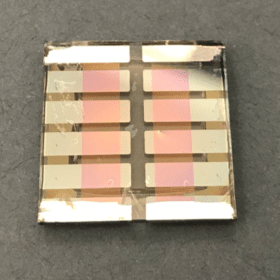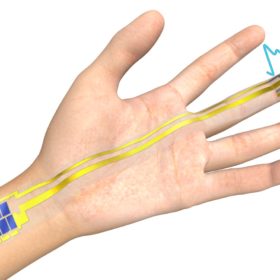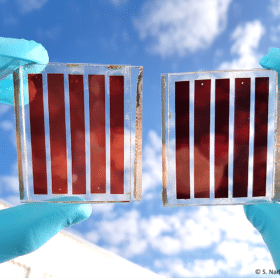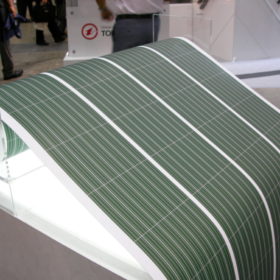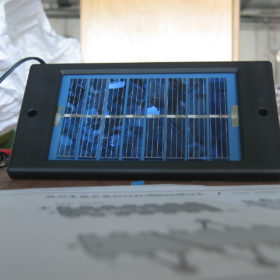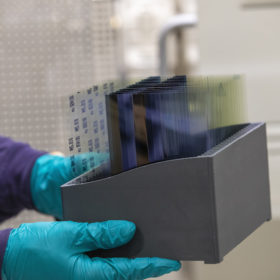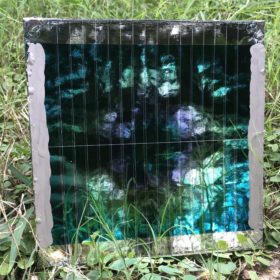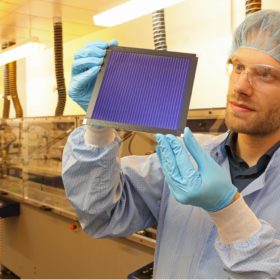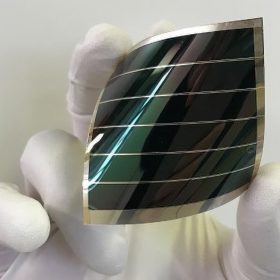Organic solar for optical wireless data receivers
Researchers in the United Kingdom have built a 14%-efficient organic PV device that can be used in high-speed optical wireless communication systems. The cell consists of a 4×2.5mm photoactive layer fabricated with a bulk heterojunction of a polymer donor and fullerene and non-fullerene acceptors.
I’ve got solar over my skin
Researchers in Japan have built a PV-powered device to measure volumetric variations in blood circulation. The system, which is just a few microns thick, was built with an organic solar module, a polymer light-emitting diode (PLED), and an organic photodetector.
Semi-transparent dye-sensitized solar module with 8.7% efficiency
The mini-panel showed a short circuit current of 58.1 mA, an open circuit voltage of 3.63 V, and a fill factor of 58.26%. It has a power output is 122.9 mW and an active area of 14 cm2.
Even if it is cheap enough, efficiency does matter
A British-German research team claims that organic PV technologies may become mature enough to compete with crystalline silicon and thin-film products not only in BIPV, but also in power generation in the electricity market. In order to get there, however, organic PV products will have to achieve higher efficiencies.
AI model for accurate prediction of organic PV efficiency
Over the last few months, Nastaran Meftahi has been spending her time in pandemic lockdown developing a machine-learning model to predict the future of next-generation organic solar cells.
Armor announces 26% efficiency for organic solar cell
The French organic PV specialist has achieved the record efficiency for cells exposed to low light (1000 lux). Armor sees potential in energy-intensive applications.
Organic solar PV cells on paper substrate for indoor use
Researchers at the Indian Institute of Technology Kanpur have developed 12×12 cm2 sub-modules from organic solar PV cells on a paper substrate that could be used to power flexible electronic devices under an indoor lighting environment. The modules are said to deliver a power density of up to 12 µW/cm2 under illumination from a 1000-lux cool‐white LED.
New world record for large-area organic PV module efficiency
Scientists in Germany have achieved 12.6% efficiency with a 26 sq cm organic panel and 11.7% for a 204 sq cm device. The feats were achieved with a new module layout and a slower, high-resolution, short-pulse laser structuring process.
Large-area organic PV module with 9.5% efficiency
Researchers in Taiwan have developed an organic PV module with an active area of 216 sq cm. The panel is said to have open circuit voltage of 10.6 V and short circuit current of 1.82 mA. It also features the highest efficiency reported for a panel of its kind which has an active area of more than 100cm2
An organic solar cell with 25% efficiency
The ‘best conversion performance in the world in a dark room’ is how the developers of a new organic PV device have described it. Such cells could be used as a wireless source of energy for internet of things applications or in gadgets such as temperature-humidity and motion sensors.
